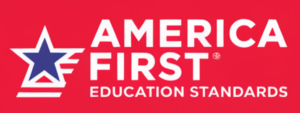DRAFT: Compliance Manual for [Final Organization Name] Accredited Schools
Section 1: Introduction & Purpose This Compliance Manual outlines the standards, expectations, and reporting requirements for all schools accredited by [Final Organization Name]. Schools must adhere to these guidelines to maintain accreditation status and remain eligible for state recognition where applicable.
Section 2: Institutional Eligibility & Accreditation Requirements
- School Type Eligibility
- Must operate as a private K-12 school, charter institution, homeschool cooperative, or hybrid learning model.
- Must demonstrate a commitment to academic excellence and values-driven education.
- Must comply with all applicable state laws regarding private or alternative education institutions.
- Accreditation Standards Compliance
- Maintain curriculum that meets [Final Organization Name] accreditation benchmarks.
- Employ faculty who meet certification or subject-matter expertise requirements.
- Maintain a governance structure that ensures financial and operational stability.
- Transparency & Ethical Conduct
- Schools must provide full transparency on financial status, governance decisions, and curriculum policies.
- Institutions must respect parental rights and provide accessible documentation on educational content.
Section 3: Annual Compliance Reporting
- Annual Self-Report Submission
- Schools must submit a compliance report each year detailing:
- Curriculum adherence to required academic standards.
- Student performance data, including standardized test scores and graduation rates.
- Faculty qualifications and any professional development undertaken.
- Financial stability reporting, where applicable.
- Schools must submit a compliance report each year detailing:
- Audit & Review Process
- Accreditation Review Board will conduct:
- Random audits of schools to verify compliance.
- Mandatory reviews for schools flagged for performance concerns.
- Probationary review for institutions with significant compliance violations.
- Schools failing compliance checks will be given 90 days to correct deficiencies.
- Accreditation Review Board will conduct:
- State-Level Reporting (Optional)
- Schools seeking state recognition must submit compliance data in a format acceptable for state education boards.
- Compliance documentation must meet school choice funding and voucher program requirements where applicable.
Section 4: Curriculum Standards & Compliance
- Core Subject Requirements
- History & Civics: Emphasis on U.S. founding principles, the Constitution, and Western Civilization.
- Mathematics: Structured approach to logical problem-solving and advanced computation.
- Science: Encouragement of evidence-based inquiry and critical thinking.
- English & Literature: Focus on classical literature and strong written communication.
- Electives & Enrichment Standards
- Schools may offer arts, music, vocational training, and entrepreneurship programs to enhance student learning.
- Religious and values-based instruction is permitted with parental transparency.
- Compliance Verification
- Schools must maintain records of lesson plans, assessments, and instructional materials.
- Accreditation audits may include interviews with faculty and review of student performance.
Section 5: Faculty & Administration Requirements
- Teacher Qualifications
- Teachers must hold certification in their subject area or demonstrate equivalent professional expertise.
- Institutions must provide professional development opportunities for educators.
- Administrative Governance
- Schools must maintain a governing body to oversee policy and financial decisions.
- Leadership must align with accreditation standards and ensure institutional stability.
Section 6: Student Assessment & Graduation Requirements
- Assessment Standards
- Schools must administer annual standardized assessments or equivalent evaluations.
- Alternative evaluation models (portfolio reviews, performance assessments) may be used with prior accreditation approval.
- Graduation Criteria
- Students must complete core curriculum requirements.
- Schools must track post-graduation outcomes (college admissions, career placements, etc.).
Section 7: Accreditation Review & Renewal Process
- Initial Accreditation Review
- Schools must complete a thorough evaluation to receive accreditation status.
- Institutions not meeting full compliance may receive provisional accreditation with corrective action steps.
- Renewal Process
- Accreditation is valid for 5 years, with renewal requiring:
- Updated compliance reporting.
- Continued adherence to academic and governance standards.
- Site evaluations where necessary.
- Accreditation is valid for 5 years, with renewal requiring:
- Revocation & Appeals
- Accreditation may be revoked for:
- Failure to maintain compliance.
- Financial instability threatening educational quality.
- Significant deviation from curriculum standards.
- Schools may appeal revocation decisions through a formal review process.
- Accreditation may be revoked for:
Section 8: Legal Protections & State Recognition
- State Recognition Process
- Schools seeking official state recognition through accreditation must:
- Meet all compliance and documentation requirements.
- Submit reports to applicable state education agencies.
- Accreditation recognition may enable eligibility for school choice funding and voucher programs.
- Schools seeking official state recognition through accreditation must:
- Religious & Educational Freedom Protections
- Accredited institutions may offer faith-based instruction under protections of religious liberty laws.
- Accreditation does not impose specific religious mandates, ensuring institutional autonomy.
- Non-Discrimination Clause
- Accreditation is open to all qualifying institutions that meet academic and operational standards.
- Schools must adhere to principles of academic excellence and ethical governance.
Section 9: Updates & Amendments This manual is subject to periodic review and updates to reflect changes in accreditation policies, legal requirements, and best practices. Schools will be notified of any amendments and provided a transition period for compliance adjustments.
End of Compliance Manual
